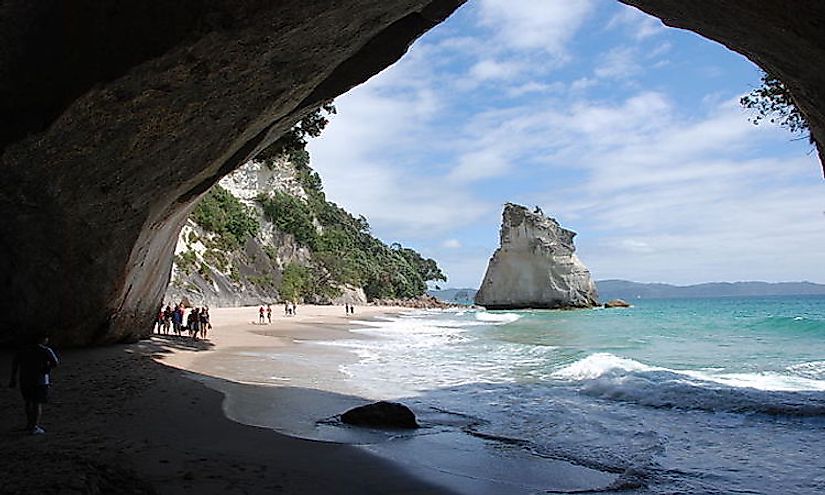What Is A Cove?

What Is A Cove?
Coves are geographic features that can be found along the coastline of oceans, rivers, bays, lagoons, and lakes. Its 2 principal characteristics include a sheltered entrance and a bay or inlet-like shape. Coves can be anywhere between 100 and 1,000 feet in width. Because of its sheltered entrance, the water within the cove is calm and lack waves or rapid currents. If the entrance is too narrow, the quality of the cove water will decrease due to a lack of circulation or the cove will trap debris.
How Are Coves Formed?
Circular-shaped coves are formed via differential erosion and weathering. This occurs when the surrounding land is made up of 2 layers: smaller, soft rocks on the bottom and heavier, larger rocks on the top. This soft, bottom layer is often made of limestone, sandstone, or clay. The hard, bottom layer may be made of something like quartz or granite. Erosion and weathering eat away at the bottom layer of rocks, causing the heavier rocks on top to fall. Weathering can occur in several different way, including: rain, wind, ice, plant growth, waves, and acid in seawater.
Early Humans And Coves
Archaeologists have discovered numerous ancient human settlements located around or near coves. It is believed that coves were attractive to early humans for two reasons. In freshwater environments, coves provide a safe and sheltered location for collecting daily water needs. In saltwater environments, coves provide easier access to fish and seafood than the open ocean. This explains why many of these discovered settlements have included fishing artefacts, dating back to 7000 BC (the Mesolithic era).
Famous Coves Around The World
Lulworth Cove
One of the most well-known coves in the world is the Lulworth Cove, located on the southern coast of England. This cove is a popular tourist attraction and receives approximately 1,000,000 visitors annually. It is also considered one of the natural wonders of England.
Lulworth Cove was formed due to weathering, the process previously mentioned. Waves on the sea side of the cove eroded away the soft clays and sands below. The outer ring of this cove consists of limestone, clays, and greenstone. The back wall of the cove is made of chalk, a stronger substance.
The coastline, where Lulworth Cove is located, is referred to as Jurassic Coast. This name pays tribute to the significant number of fossils found here. These fossils are more than 10 million years old and are embedded in rocks from several eras, including: Jurassic, Triassic, and Cretaceous.
Other famous coves around the world include: McWay Cove (California, US), Peggy’s Cove (Nova Scotia, Canada), Broadsands Cove (North Devon Coast, UK), and Cathedral Cove (North Island, New Zealand).
McWay Cove
McWay Cove is located along the Pacific coast of California and is recognized for the 80-foot tall waterfall that cascades into its waters. There is one, marked trail that provides visitors with a scenic viewpoint here.
Peggy’s Cove, Halifax, Nova Scotia, Canada
Peggy’s Cove is located 26 miles south of the city of Halifax in Nova Scotia, Canada. This cove is also a popular tourist attraction. A town by the same name is located nearby; it was founded in 1811. This cove was in the path of both Hurricane Juan of 2003 and Hurricane Bill of 2009. Each hurricane caused extensive flooding and damage of the cove and the nearby town.
Broadsands Cove
The Broadsands Cove is unique due to its pebble coastline, which attracts visitors every year.
Cathedral Cove
Cathedral Cove leads to a cavern with a natural arch. Passing through the arch leads to 2 additional coves located further in.







